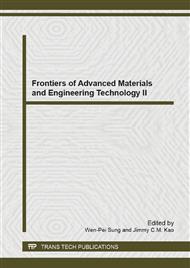p.200
p.204
p.210
p.214
p.217
p.227
p.231
p.235
p.243
Mathematical Morphology Applied to the Cross Section of Microscopic Plant Fiber for Characterization of Geometric Parameters: A Case Study of “Rhektophyllum camerunense”
Abstract:
In this article, classification methods using mathematical morphology are used to generate the internal and external contours of an image of a natural fiber, "Rhektophyllum camerunense" taken by an epifluorescent electron microscope. The presence of impulse noise in the captured image and the presence of an almost identical texture characterized by the heterogeneity of the basic cells whose microstructure composes the fiber, make it difficult to use conventional methods of image analysis. As the fiber of R. camerunense consists of basic cells interconnected by cellulosic hemicellulose, their delineation is possible by detecting the contour of the lumens. To distinguish the regions of basic cells, binarization is performed after application of a 3 × 3 median filter. The results obtained allow development of a method for calculating the geometrical parameters of the cross section of the fiber R. camerunense and generation of the basic structure of the cross section by Voronoi diagram.
Info:
Periodical:
Pages:
217-226
Citation:
Online since:
April 2014
Authors:
Price:
Сopyright:
© 2014 Trans Tech Publications Ltd. All Rights Reserved
Share:
Citation:


